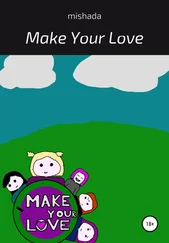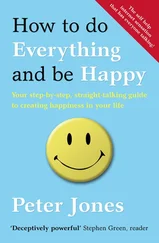So now it’s time to learn to ride a new kind of bicycle, a bicycle that’s about personal freedom. I’m always fond of saying that the chains of the free are only in people’s minds. Your fears, your doubts, your confusions, your habits, and your compulsions are all by-products of how you’re thinking, and how you’re thinking dictates how you’re feeling and behaving and living your life.
If you have fears, it’s not that heights or spiders or meeting new people, for example, scare you; it’s that you learned how to be afraid of heights, spiders, and new people. Babies are born with only two fears: the fear of falling and the fear of loud noises. All other human fears are learned. Therefore, if you learned to be afraid, you can learn to be unafraid. If you learned to do something one way, you can learn how to do it totally differently and better. Learning is the way to personal freedom. Hypnosis and NLP are tools to make this easy and fun.

PATTERNS OF PROCESS AND ELICITATION
One PATTERNS, LEARNING, AND CHANGE
How to Take Charge of Your Brain
I HAVE WRITTEN MANY BOOKS and talked to many hundreds of thousands of people about hypnosis and NLP, and people are still confused about the similarities and differences between the two. In this book I hope to simplify the issue. My attitude is that at some level or other, everything is hypnosis. People are not simply in or out of trance but are moving from one trance to another. They have their work trances, their relationship trances, their driving trances, their parenting trances, and a whole collection of problem trances.
One characteristic of trance is that it is patterned. It’s repetitive or habitual. It’s also the way we learn.
After we’re born, we have so much knowledge and expertise to acquire—everything from walking, talking, and feeding ourselves to making decisions about what we want to do with the rest of our lives. Our brains are quick to learn how to automate behavior. Of course, this doesn’t mean the brain always learns the “right” behavior to automate; quite often, our brains learn to do things in ways that make us miserable and even sick.
We learn by repetition. Something we do enough times gets its own neuronal pathways in the brain. Each neuron learns to connect and fire with the next one down, and the behavior gets set.
Sleeping and dreaming are important parts of the learning process.
Freud thought of dreams as merely “wish fulfillment”—and maybe for him they were. I regard dreaming as unconscious rehearsal. If I do something I’ve never done before, I tend to go home, go to sleep, and do it all night long. This is one of the functions of rapid eye movement (REM) sleep. REM sleep is the way the unconscious mind processes what it’s experienced during the day. It’s literally practicing repetitively to pattern the new learning at the neurological level. Quality information and quality material are important to the learning process. If the brain isn’t given anything specific to work with, it processes nonsense.
If we plan to take control of our learning, we need to understand that it’s not only repetition that is important but speed as well. The brain is designed to recognize patterns, and the pattern needs to be presented rapidly enough for the human to be able to perceive the pattern for what it is.
Most people have drawn a series of stick figures in the margins of their schoolbooks, then flipped through them to make the figure appear to move. Each page has on it a static image, but the brain will find a pattern—in this case, movement—if the images run rapidly enough.
We wouldn’t be able to enjoy movies without this process. We’d never be able to understand the story if we only saw one frame a day.
So, when we dream, we’re running through things to learn, and we’re not doing it in real time. “Internal” time differs from clock time in that we can expand or contract it. We learn at extraordinary speed—we can do maybe eight hours worth of work in five minutes before waking up. Sleep researchers support this idea. Subjects who report massively long and complex dreams are found through neural scanning to have been dreaming for only minutes, or even seconds, at a time.
Sleep, therefore, is one of the ways we program and reprogram ourselves. If you doubt your own ability to do this, try this out tonight:
As you’re settling down to go to sleep, look at the clock, and tell yourself several times very firmly that you’re going to wake up at a specific time. Set the alarm if you like, but you will wake up a second or two before it goes off.
This is something I’ve encountered in several different cultures. Some people gently bang the pillow with their heads the same number of times as the hour they want to get up.
Others tap their heads or their forearms to set their wake-up time. Whichever way it’s done, the principle is the same; you somehow “know” you have an internal clock that you can set, using a specific ritual, and no matter how deeply you sleep, it will wake you as effectively as any alarm.
If we can program ourselves to do one little thing—such as waking without an alarm—we can program our minds to do many things. We can decide to go to the supermarket. Maybe we need bread, milk, peanut butter, and a couple of cartons of juice. We can drive five miles to the supermarket, walk through a thousand products, maybe talking to someone on our cell phone, and still remember the juice, peanut butter, milk, and bread.
Academics sometimes challenge me for something they call “evidence.” They want to know the theory behind what I do; they want me to explain it, preferably with the appropriate research references. I’ve even had people ask for the correct citations for things that I’ve made up. The way I see it, it’s not my job to prove, or even understand, everything about the workings of the mind. I’m not too interested in why something should work. I only want to know how , so I can help people affect and influence whatever they want to change.
The truth is, when we know how something is done, it becomes easy to change. We’re highly programmable beings—as unpopular as that idea still is in some quarters. When I started using the term “programming,” people became really angry. They said things like, “You’re saying we’re like machines. We’re human beings, not robots.”
Actually, what I was saying was just the opposite. We’re the only machine that can program itself. We are “meta-programmable.” We can set deliberately designed, automated programs that work by themselves to take care of boring, mundane tasks, thus freeing up our minds to do other, more interesting and creative, things.
At the same time, if we’re doing something automatically that we shouldn’t be doing—whether overeating, smoking, being afraid of elevators or the outside world, becoming depressed, or coveting our neighbor’s spouse—then we can program ourselves to change. That’s not being a robot; that’s becoming a free spirit.
To me the definition of freedom is being able to use your conscious mind to direct your unconscious activity. The unconscious mind is hugely powerful, but it needs direction. Without direction, you might end up grasping for straws…and then finding there just aren’t any there at all.
Two DOING MORE OF WHAT WORKS
The Secret of Effortless Change
VIRGINIA SATIR, THE FAMILY THERAPIST, once said something that has stayed with me for many years. She said: “You know, Richard, most people think the will to survive is the strongest instinct in human beings, but it isn’t. The strongest instinct is to keep things familiar.”
Читать дальше












